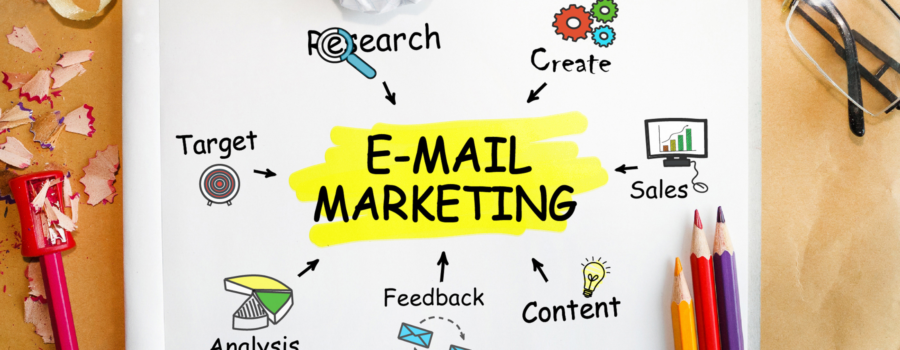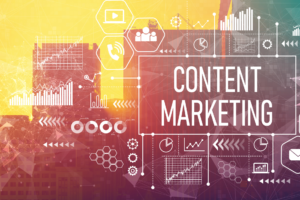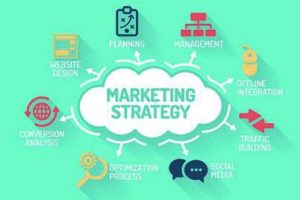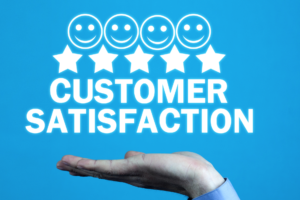There are 3.9 billion daily email users out there. That being said, it’s not surprising that email is projected to stay for the long run. One of the best strategies a marketer could have is understanding which mediums are ideal for reaching their customers. That’s why email marketing continues to be a prevalent method for marketers as the majority of their customers use this platform every day. However, being able to properly execute email marketing is not a simple task. That’s why Tindall-Creative Marketing has prepared the top best practices that every marketer should know when beginning their email journey.
Send Initial Welcome & Thank You Email
When a consumer enrolls in a newsletter subscription or signs up for a webinar, it’s critical to make it clear that their intended task has worked. That is where a welcome/thank you email comes into play. For instance, if a customer clicks on a “join our newsletter” button on your website, it would be helpful for them to receive an email thanking them for joining so they know that they are officially a part of the subscription. Or, if a customer purchases an item online, they most likely will wait to receive a thank you email to feel confident that the purchase went through. Not only do these emails help the customer feel relieved on their end, but it also helps you as a marketer keep a more accurate email list on hand. If a fake email was inputted, you will receive that notification once the welcome email is sent out so you can remove them from your list. These thank you emails also bring additional opportunities for conversions. You can link out other products they may be interested in or other articles they can read through to promote further interaction on your website.
Offer an Opt-in & Opt-out Method
Along with the welcome email, it’s equally important to provide an option for customers to consent to receiving these emails in the first place. Sure, you may limit your target customer list, but the alternative is that it’s not only unethical, but it’s also a quick way for your business to be perceived as spam. Remember that it is always better to have a smaller, higher quality contact list than a large list filled with users who are not interested. Not only does consent matter for the beginning of the email subscription, but the user should also always have the flexibility to change their minds with a simple click of an “unsubscribe” button. By providing this option to a consumer, you will make them feel more confident in their decision to subscribe to emails, knowing that at any time they can change their mind. Remember that the more people on your contact list who actually want to be there, the better a chance you will have at maximizing your conversions.
Optimize Your Content
Similar to the content on your website, the content in your emails is extremely important for its overall performance. Make sure your email campaigns follow the tips below so they can reach their full potential:
- Include images to catch a user’s attention and keep them from bouncing off.
- Structure and format your text in a way that is easy to read and digest.
- Make headlines bold and include bulleted lists to further break up the text.
- Keep the most eye-catching and important section of the email located at the top so it’s the first thing a user reads.
- Include a CTA that is easy to spot so that users can quickly click onto it for next steps.
- Ensure subject lines are straight and to the point, many marketers even see benefits of including emojis in them to help stand out.
When in doubt, you can always create an A/B test so you can see for yourself, which email template provides the best results for your target audience.
Pick the Best Time to Hit Send
You may have the perfect email drafted and ready to go, but if it doesn’t align with the best interest of your customer’s schedule, it may get buried, never to be seen. Because the majority of consumers check their emails during the day rather than the evening, the optimal time to schedule emails would be from 2-5PM. However, not every day is treated the same for a consumer. For instance, Friday, Saturday and Sunday are typically days that a person is busy with their own personal plans, and less likely to look in their inbox. Same goes for Monday since consumers are likely to be recovering from their weekend plans and now need to focus on catching up on their work. That being said, the sweet spot appears to be Tuesdays, Wednesdays and Thursdays. By scheduling emails out in advance, you can ensure that you hit the best time for your customer for open and click through rates. Also, depending on the type of content in the email, you may want to plan on a designated frequency. If you write a new blog every month, perhaps you should schedule the campaign out monthly. If you have webinars that occur every Thursday, then it would make sense to set the frequency to weekly. Do whatever makes sense for the subject of your email.
Test to Ensure Your Email is Ready
One last step before hitting send is to test the email to ensure everything is working properly and there are no spelling or formatting errors. Is the image popping up on its own? Is the name of the recipient accurate? Are the CTAs working? Did it go to your junk folder? All of these items can create havoc if they are not working perfectly and can deter a customer from wanting to read any of your emails in the future. Test your email and then try your best to spot any mistakes, this will only make your campaign stronger when it actually goes out.
To learn more about how Tind-All Creative Marketing can help you with your email marketing needs call us at (860) 916-4561 or visit tind-allcreativemarketing.com.




